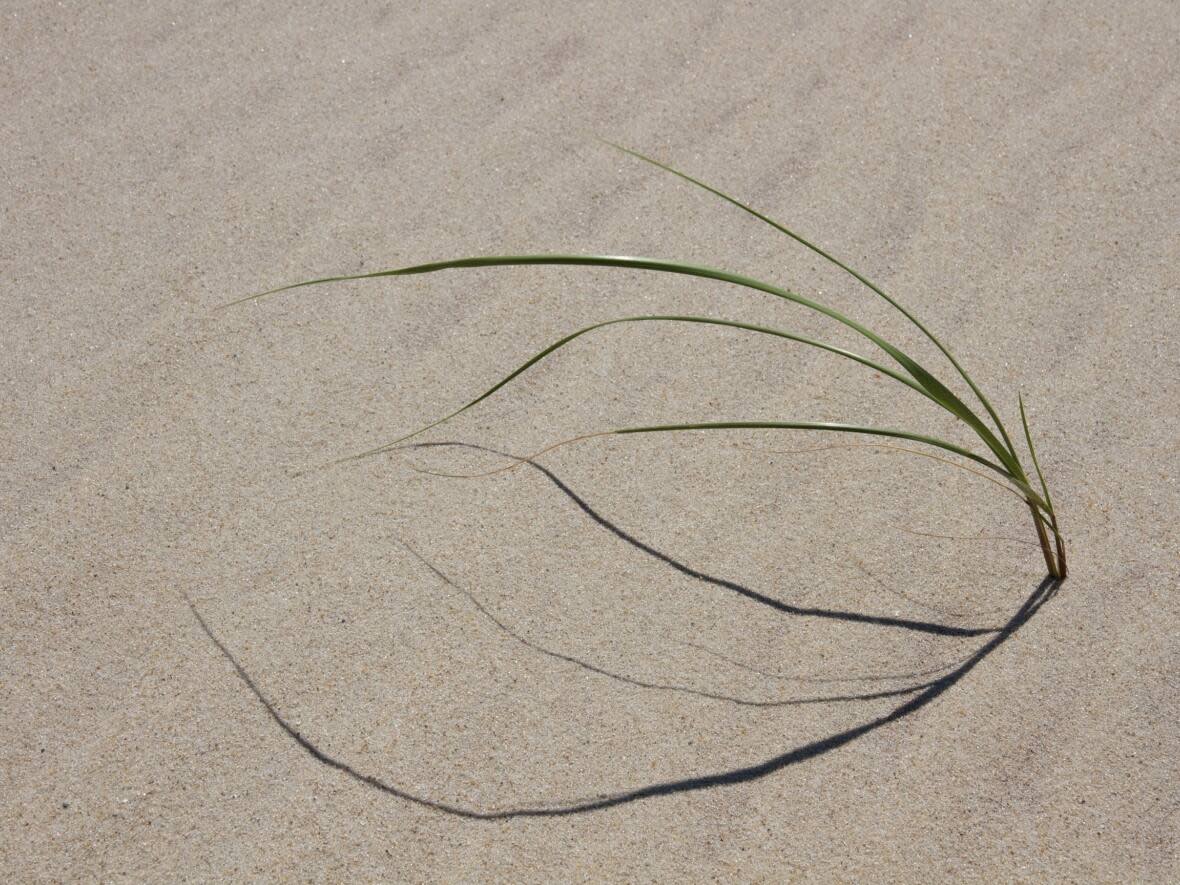A grass-planting initiative aims to help N.B. coastlines facing erosion

New Brunswick coastlines face the constant challenge of erosion and with significant weather events — the most recent being post-tropical storm Fiona — the coastline can experience damage with little time to recover.
Jolyne Hébert, the manager at the Shediac Bay Watershed Association, said the coastline's sensitive habitats were still recovering from post-tropical storm Dorian, which arrived in 2019, when Fiona hit.
"We didn't have that many years of recovery since our last major storm, and that may have weakened certain systems that we have that were meant to protect us and that were meant to protect our habitat," she said.
Austin Vibert, a resident of Miscou Island in northeastern New Brunswick, participated in a Healthy Coasts N.B. project on Saturday that involved planting marram grass in the dunes at Miscou Beach.

The grass will help the dunes and beach from eroding because the roots will keep the sand in place.
Vibert said the project was also meant to spread awareness about staying off of the dunes
He said people drive all-terrain vehicles through the dunes and the dunes can't repair themselves. He said if everyone used one trail, the dunes wouldn't face as much damage.
"We're putting up signs, so, hopefully, everyone can avoid it and just use one path or stay on the beach," said Vibert. "And hopefully the dunes can repair themselves because they really got affected a lot with this last storm."
In the last few years, Vibert said there's been less ice along the shoreline in early winter to break up the energy of the waves during storms. He said the waves are crashing into the dunes and destroying them.
Hébert said marram grass does a good job at protecting the dunes, but she said the grass is sensitive to pressure and when people walk on them, fragile areas form.
She said with the rising sea level and record-breaking wave heights, it concerns her that severe storms could happen more frequently, leaving less time to replant vegetation which would help protect the coastline.
Habitat protection
Hébert said this isn't just about protecting infrastructure, roads, sandy beaches and general enjoyment of nature. She said people need to remember that certain species rely on these coastline ecosystems as their habitats to survive.
"We need to think about the species at risk that are now at risk of declining even further because of these habitats that are disappearing," said Hébert.
Vibert said there's a saltwater marsh right behind the dunes on Miscou Island. He said the dune is the first barrier of defence for the marsh. Vibert said there's about three feet of dune above sea level that protects the marshland.
"Once this barrier breaks, it'll just flood all this back area and change the entire dynamics of that ecosystem," he said.

Hébert said there are some things coastal landowners can do to help with preserving the ecosystems by their homes.
She said her advice would be for property owners to inform themselves on the types of habitat existing on their land and find the best way to implement measures that might protect the property long term.

 Yahoo Movies
Yahoo Movies 
